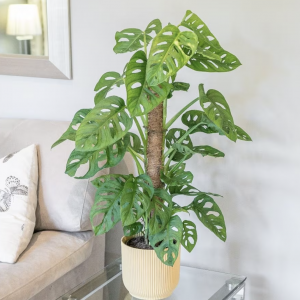Pennisetum Rubrum, commonly known as Fountain Grass, is a stunning ornamental grass appreciated for its vibrant and dramatic display in gardens and landscapes. With its graceful arching foliage and striking burgundy-red color, it adds a touch of elegance and movement to any outdoor setting.
Appearance:
Pennisetum Rubrum features long, slender leaves that cascade outward in a graceful fountain-like manner. The leaves range in color from green to deep burgundy, creating a visually striking contrast. As the grass matures, it produces feathery flower spikes that rise above the foliage, adding an additional element of beauty. These flower spikes start off as soft pink and gradually fade to a silver-gray hue, further enhancing the overall appeal of the grass.
Care Tips:
Sunlight:
Pennisetum Rubrum (Fountain Grass) thrives in full sun to partial shade. It requires at least 6 hours of direct sunlight daily to maintain its vibrant color and healthy growth.
Watering:
Once established, Fountain Grass is relatively drought-tolerant and requires minimal watering. Water deeply and infrequently, allowing the top few inches of soil to dry out between waterings. Avoid overwatering, as it can lead to root rot.
Soil:
Plant Fountain Grass in well-draining soil that is fertile and rich in organic matter. It can tolerate various soil types, including sandy or clay soils, as long as they are well-draining.
Fertilization:
Apply a slow-release balanced fertilizer in the spring to promote healthy growth and vibrant foliage. Follow the package instructions for dosage and frequency.
Pruning:
Cut back Fountain Grass in late winter or early spring before new growth emerges. Trim the grass to a few inches above the ground to allow for fresh growth. This helps maintain its neat appearance and prevents the plant from becoming overly leggy.
Division:
Every few years, consider dividing Pennisetum Rubrum (Fountain Grass) to rejuvenate its growth. Divide the clumps in early spring before new growth begins by carefully separating them into smaller sections and replanting them.
Winter Care:
Pennisetum Rubrum (Fountain Grass) is generally hardy and can tolerate cold temperatures. In colder regions, the grass may die back in winter but will usually regrow in the following spring. Mulch around the base of the plant in late fall to provide insulation and protect the roots from freezing temperatures.
Pest and Disease Control:
Fountain Grass is relatively resistant to pests and diseases. However, keep an eye out for common issues such as aphids or rust fungus. Treat any infestations or diseases promptly with appropriate organic or chemical treatments.
Fountain Grass is a versatile plant that can be used in various landscape settings, including borders, containers, or as a standalone specimen. Its vibrant foliage and graceful form make it an eye-catching addition to gardens, providing year-round interest and beauty. With proper care, Fountain Grass will thrive and bring a touch of elegance to your outdoor space.








Reviews
There are no reviews yet.